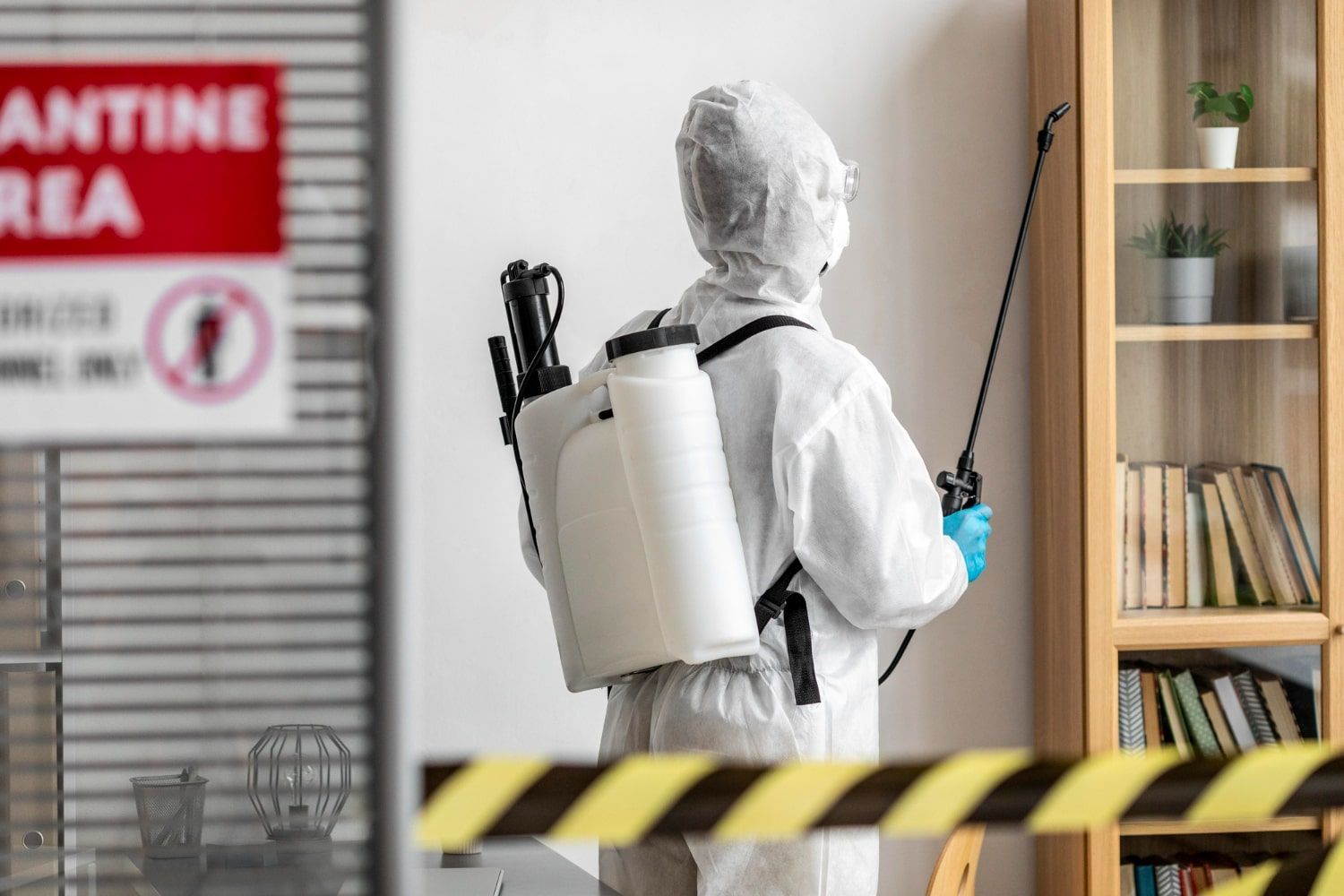Is your indoor environment making your pet sick?
- By JULIE NICOLL, AMERICAN MOLD EXPERTS
- •
- 03 Oct, 2023
- •

Today, let’s dive into the question, “Is your indoor environment making your pet sick?” We love our pets, and most of us do whatever it takes to make our pets’ lives enjoyable and healthy. We provide them with toys, walks, and the best food to keep them healthy. If they get sick, we take them to the vet to determine the cause and help them feel better. In today’s article, I will delve into the issue of how our homes can make our pets sick. When we are talking about the indoor environment and drivers of illness, we need to consider three primary toxin sources: mold, toxins (mycotoxins), and volatile chemicals (VOCs).
Toxins are defined as poisonous substances that are specific to the metabolic activities of a living organism. A common saying in toxicology is that “the dose makes the poison,” meaning that anything is toxic if you are given enough of it. However, it is equally important to understand that everyone detoxifies at different rates, and what affects one person may not affect another similarly. Humans, cats, and dogs detoxify at vastly different rates. Since mycotoxins and VOCs are detoxified mainly through binders, this can sometimes be problematic.1
Mold and their toxins (mycotoxins) are present in many different environments. These molecules are toxic secondary metabolites produced by fungi in the Aspergillus, Penicillium, Fusarium, and Stachybotrys genera.2 These toxins have a wide range of harmful effects, including immunotoxin (adverse effects on the immune system), nephrotoxic (deterioration of kidney function), hepatotoxic (liver injury), and carcinogenic (can cause cancer).3 Because of these harmful aspects of mycotoxins, millions of dollars are spent yearly on monitoring food supplies. Strict limits have been imposed on the amounts of different mycotoxins present in foods across the European Union and the United States. However, even with these safeguards, acute poisoning and deaths of dogs fed with food containing maize infested with toxin-producing fungi were reported in 1951, 1998, 2005, and 2020 in the United States.4,5 Still, one source of mycotoxin exposure that is starting to be identified in the scientific community is the exposure of fungi and mycotoxins in water damaged buildings (WDBs). One of the earliest studies was from Tuomi et al.
in 2000. This study showed high levels of mycotoxins in buildings damaged by water.6 This study has been backed up by multiple other studies including one from Andersen et al. in 2011.7 A recent test shows dogs seemed to suffer from many of the same symptoms that we see in humans such as lack of energy, tremors, hormone issues, and tumors.
Another reason mold and mycotoxins can be problematic for our pets is their size and closeness to the ground where spores can land. Their body size can make a small dose of mold more impactful. Like humans, any compromised immunity or elderly pets are more susceptible to mold exposure. And since they spend much of their time close to the floor, mold and mycotoxins can be more easily absorbed through the skin or inhaled.
Suppose you are concerned that mold and or mycotoxins might be an issue. In that case, we suggest having a home mold assessment that includes a building history, observations including looking for “invisible” mold that often looks like dust, evaluation of your HVAC, and testing. At all times, make sure your home’s humidity remains below 60%. 8,9,10
American Mold Experts commits to addressing your concerns with experience and professionalism. Knowing the possible effects of short-term and long-term exposure, we work very hard to ensure a healthy & and safe environment after we leave your home or business. Our inspectors are certified by the Professional Mold Inspection Institute(PMII) to perform inspection and remediation services for residential and commercial properties.
American Mold Experts
Call today to schedule an assessment!
239-572-2216 or visit www.AMEswf.com
Julie S. Hurst – Nicoll, MBA, CMI, CMR
President, American Mold Experts
Serving Central Indiana & Southwest Florida
(Other States for Mold Toxic Patients/Clients Upon Arrangement)
Mold Inspections, Testing & NON-Destructive Remediation
Clearance Testing is ALWAYS INCLUDED in Warranted Jobs (excluding States that forbid clearance by Remediation
Company, ie Florida)
A+ Accredited Better Business Bureau (BBB)
IICRC Certified Company
FL License MRSA 3097, MRSR 3248
References:
1. Court, M.H. Feline drug metabolism and disposition:
pharmacokinetic evidence for species differences and molecular
mechanisms. Vet Clin North Am Small Anim Pract 43, 1039-54
(2013).
2. Jedidi, I. et al. Mycoflora isolation and molecular characterization
of Aspergillus and Fusarium species in Tunisian cereals. Saudi J Biol
Sci 25, 868-874 (2018).
3. Ferruz, E. et al. Inhibition of Fusarium Growth and Mycotoxin
Production in Culture Medium and in Maize Kernels by Natural
Phenolic Acids. J Food Prot 79, 1753-1758 (2016).
4. Bailey, W.S. & Groth, A.H., Jr. The relationship of hepatitis X of
dogs and moldy corn poisoning of swine. J Am Vet Med Assoc 134,
514-6 (1959).
5. Stenske, K.A., Smith, J.R., Newman, S.J., Newman, L.B. & Kirk, C.A.
Aflatoxicosis in dogs and dealing with suspected contaminated
commercial foods. J Am Vet Med Assoc 228, 1686-91 (2006).
6. Tuomi, T. et al. Mycotoxins in crude building materials from
water-damaged buildings. Appl Environ Microbiol 66, 1899-904
(2000).
7. Andersen, B., Frisvad, J.C., Sondergaard, I., Rasmussen, I.S. &
Larsen, L.S. Associations between fungal species and water-
damaged building materials. Appl Environ Microbiol 77, 4180-8
(2011).
8. Shaw, W. & Pratt-Hyatt, M. Biochemical Markers in the Urine
Associated with Gastrointestinal Mold-Overgrowth Are Linked with
Elevated Urinary Mycotoxins in Patients with Suspected Mold
Illness. Townsend Letter (2019).
9. Qin, T. et al. Epigenetic Alteration Shaped by the Environmental
Chemical Bisphenol A. Front Genet 11, 618966 (2020).
10. Lehner, A.F., Samsing, F. & Rumbeiha, W.K. Organophosphate
ester flame retardant-induced acute intoxications in dogs. J Med
Toxicol 6, 448-58 (2010).
For more information, visit our site: www.AMEswfl.com

Why Might Our Schools Have Mold?
. High humidity plagues many months of the year.
. Schools in an effort to save energy costs during the summer months turn up the thermostats to save energy so the HVAC runs less time. Let us remember the #2 job of HVAC is to dehumidify.
. While the kids are off for summer break, carpet & entry mat cleaning can create excess humidity.
. Rainy season can lead to indoor leaks, roof, plumbing, condensation that might not be caught as quickly as during the school year.
. Indoor humidity rises above 60%.
What to look for:
. musty smells
. condensation
. water stains on ceilings, walls, floors and window sills
. any obvious mold
. something that looks like dust on the underside of book shelves, desks, behind book cases or furniture up against a wall. Remember dust is a particulate and follows gravity to the tops of surfaces or on the floor. It does not settle on the underneath side of furniture/desks, that is typically what I call the invisible mold.
But keep in mind that the most common molds don’t require a water leak or direct water source but simply flourishe in high humidity and often looks like dust!! Mold colonies in as little as two weeks produce a byproduct called mycotoxins. Mold toxins are absorbed into our respiratory and digestive tracks as well as your skin. These mycotoxins can cause fatigue, brain fog, poor mood, lethargy, chronic sinus issues and difficulty with learning and memory.
Boston Children’s Hospital reports health effects of hypersensitivity reactions like asthma, allergic rhinitis and hypersensitivity pneumonitis, airway & conjunctival irritations, acute toxicity syndromes, infections and nonspecific symptoms such as eye irritation, coughing, sore throat, headaches and difficulty concentrating.²
Dr. Rick Sponaugle of Oldsmar, Florida states the longer the mold is present the worse the symptoms become. He explains mycotoxins from mold are made of fatty acids and find themselves in the body, being lipophilic and embedding into the fatty tissues of the body, particularly the brain, which is comprised mainly of adipose tissue. Once in the brain, these toxins can kill or damage neurons, impairing brain function and thus developing neurological symptoms and conditions.³
Mold exposure can also lead to behavior issues. Mental Health of Connecticut reports mold can present itself in a psychiatric way too. This included brain fog, anxiety, trouble concentrating and see people seeking and receiving treatment for a mental illness that only exists because of their exposure to mold. Further they remind us that research has found that 25% are more vulnerable to mold toxicity due to a genetic predisposition. This can result in a family living in the same home ( or classroom) and only one person presents with symptoms which can be physical or mental or both.⁴
If your children exhibit new symptoms after starting school, you may want to consider mold as an issue. And when you visit the school be on the lookout for signs of water damage, discolored ceiling tiles or a musty smell. And keep in mind your child may be the one in four that has a genetic predisposition to mold toxicity.
How to search out help? Most functional medical doctors can diagnose mold toxicity or a few lab allow testing without a doctors order. One such lab is Real Time Labs in Texas who will mail you a kit for a urine specimen. Note allergy doctors look for allergy to mold, not mold toxicity, so if you suspect mold look for a specialty doctor who has experience with mold toxicity.
AMERICAN MOLD EXPERTS
Call today to schedule an assessment!
239-572-2216 or visit www.AMEswf.com
Julie S. Hurst- Nicoll, MBA, CMI, CMR
President, American Mold Experts
Serving Central Indiana & Southwest Florida
(Other States for Mold Toxic Patients/Clients Upon Arrangement)
Mold Inspections, Testing & NON-Destructive Remediation
Clearance Testing is ALWAYS INCLUDED in Warranted Jobs (excluding States that forbid clearance by Remediation
Company, ie Florida)
A+ Accredited Better Business Bureau (BBB)
IICRC Certified Company
FL License MRSA 3097, MRSR 3248
References:
1. https://www.epa.gov/mold/mold-and-indoor-air-quality-schools
3. https://sponauglewellness.com/mold-toxicity/symptoms/children/
American Mold Experts
American Mold Experts in Southwest Florida provides certified mold remediation, inspection, testing and removal. We’re passionate about restoring health to area homes and businesses when mold is found.
CONTACT US
999 Vanderbilt Beach Rd Suite 200, Naples, FL 34108
BUSINESS HOURS
- Mon - Fri
- -
- Sat - Sun
- Closed

